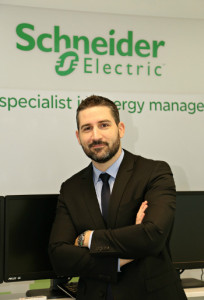Our current obsession with speed in almost all types of computing is not going to go away, in the simple sense that our ICT capabilities have now reached the level where we can work at raw light speed. Performance of some components are now at or close to Scotty’s Star Trek dictum: “Ye cannae change the laws of physics, Captain.” So we have to look at other ways to improve performance in regard to specific tasks, for example using ever greater bandwidth, which is conceptually much the same as multiple parallel operations.
The other basic and older component of data processing is electricity, whether as bits and bytes of charged electrons or as pure energy. Alas, in its signalling role electricity is theoretically as fast as light but always held back by the conductivity of the materials. We have continuously improved the electrical performance of chips and circuits and networks, but light has led since its gradual introduction over several decades as optical cable production improved. It cannot be overtaken, as the distinguished Starship Enterprise engineer points out.

Take the example of an average data centre with a Power Usage Effectiveness of two points, also the average. We have shown with clients that an investment of about €200,000 can produce a return on investment in 1.5 years and a return of savings in the same period of the order of €150,000, Vincent Barro, Schneider Electric
Processing and distribution
We have been preoccupied by data processing and distribution, especially since the millennium, as internet traffic was geometrically boosted by multiple new devices and services and that cloud thing. The other aspect of electricity, as the power for absolutely all of our ICT kit, rather took second place. Yes, chipmakers worked on processors that would consume less power and battery technology for our mobile devices has taken huge strides forward because of the sheer market demand and growth. The combination of low power chips and better batteries has been remarkably successful. But of course now it is all about the screen. Today’s kids think it was all before the dawn of time but the transition to colour screens instantly multiplied the power load on desktops as well as portables.
Right now, electrical power has emerged as a major limiting factor in the expansion of computing and communications and the technology that enables them. Cloud computing has concentrated traffic in hyperscale data centres with massive energy demands. Those demands can challenge regional electricity supply grids and even national energy resources — or at least the priorities in allocating power.
Those giant data centres are still the prerogative of the web superpowers like Amazon, Google, Facebook, Microsoft and a very few others. Down at ‘normal’ scale, commercial data centres and perhaps a click lower at the corporate level (some of which internationally are pretty large), the power issues are primarily about economies. When the electricity bill is in the hundreds of thousands of euro per month or even more, an apparently modest few percentage points or even fractions is of bottom line significance.
Data centre focus
Data centres and their comms rooms cousins are the most obvious focal points of the power challenge. Apart from the concentration of ICT hardware and their absolute centrality in the operations of the organisation or its clients, they are where the parallel requirements and costs of cooling and other electrical services are most manifest. The operating costs of any data centre are generally about a half and half split between the ICT systems and the electrical demands of its infrastructure — the environmental control, the UPS and the other essential facilities such as lighting and miscellaneous electrical equipment.







Subscribers 0
Fans 0
Followers 0
Followers